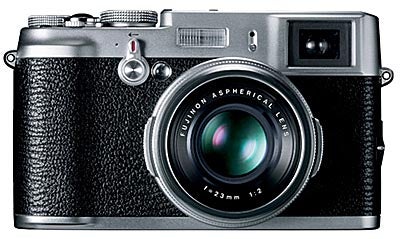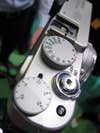Fujifilm announces X100, APS-C Sensor Compact
PHOTOKINA: Finepix X100 aimed at mass of photographers looking for a pro-level compact.

We may earn revenue from the products available on this page and participate in affiliate programs. Learn more ›
**FROM OUR EDITORS AT PHOTOKINA: **Fujifilm entered the all but non-existent large sensor compact camera category this morning, with the launch of the Finepix X100—a 12.3MP APS-C sensor camera with a 35mm equivalent f/2 lens, a newly developed EXR processor and a 1970’s feel.
Attempting to capitalize on the mass number of professional photographers looking for a compact with the image quality of a high-end DSLR to be used as a backup, as well as advanced amateur shooters looking for a high-end compact, FujiFilm built the Finepix X100 from the ground up. It is meant to compete directly with the Leica X1 and the Sigma DP2.
The X100 features a hybrid viewfinder that allows users to switch between a rangefinder-style optical viewfinder and an electronic viewfinder. Other key features include 720p HD video capture, a magnesium alloy body and old-school analogue controls.
The camera is well equipped for low-light situations, offering a maximum ISO of 6400. Other notable specs include 5 fps continuous shooting, support for the SDXC card format and a 2.8’’ LCD.
Expect this beautifully crafted high-end compact to hit stores sometime in 2011. We will keep you updated as our editors over at Photokina in Germany have a chance to get their hands on this bad boy.




